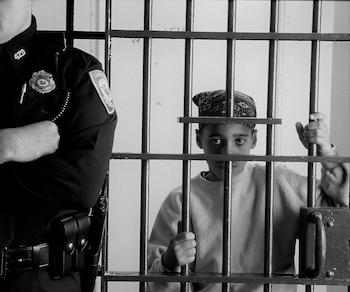Between 2000 (the peak year) and 2020, the number of youth held in juvenile justice facilities on a typical day fell from 108,800 to 25,000, a 77% decline.
From The Sentencing Project:
Between 2000-2020, there has been a 77% decline in youth incarceration. However, racial and ethnic disparities in youth incarceration and sentencing persist despite overall decrease in youth offending.
Introduction

Youth arrests and incarceration increased in the closing decades of the 20th century but have fallen sharply since that time. Public opinion often lags behind these realities, wrongly assuming both that crime is perpetually increasing and that youth offending is routinely violent. In fact, youth offending is predominantly low-level, and the 21st century has seen significant declines in youth arrests and incarceration. Between 2000 and 2020, the number of youth held in juvenile justice facilities fell from 109,000 to 25,000—a 77% decline.
As The Sentencing Project marks 50 years since the era of mass incarceration began, states working to end this overly punitive era can learn important lessons from both the rise and then the sustained fall in youth arrests and placements.
One-Day Count of Youth Incarceration
Between 2000 (the peak year) and 2020, the number of youth held in juvenile justice facilities on a typical day fell from 108,800 to 25,000, a 77% decline. The one-day count for 2020, taken in late October, represents a drop of more than 30% versus 2019, likely reflecting both declines in youth offending and arrests during the pandemic and reduced use of incarceration for arrested youth to reduce the spread of COVID in facilities.
This one-day count combines detained youth held in detention facilities (those awaiting their court dates or pending placement to a longer-term facility after being found delinquent in court) with committed youth held in youth prisons, residential treatment centers, group homes, or other placement facilities as a court-ordered consequence after being adjudicated delinquent in juvenile court. In 2019, roughly 40% of youth in the one-day count were in detention and 60% were in commitment. These counts do not include people under 18 held in adult prisons and jails.
Racial and Ethnic Disparities in Youth Incarceration
Youth of color are much more likely than white youth to be held in juvenile facilities. In 2019, the white placement rate in juvenile facilities was 72 per 100,000 youth under age 18. By comparison, Black youth were 4.4 times as likely to be incarcerated (315 per 100,000); Tribal youth were 3.2 times as likely (236 per 100,000); and Latinx youth were 27% more likely (92 per 100,000). Asian youth were the least likely to be held in juvenile facilities (19 per 100,000).
